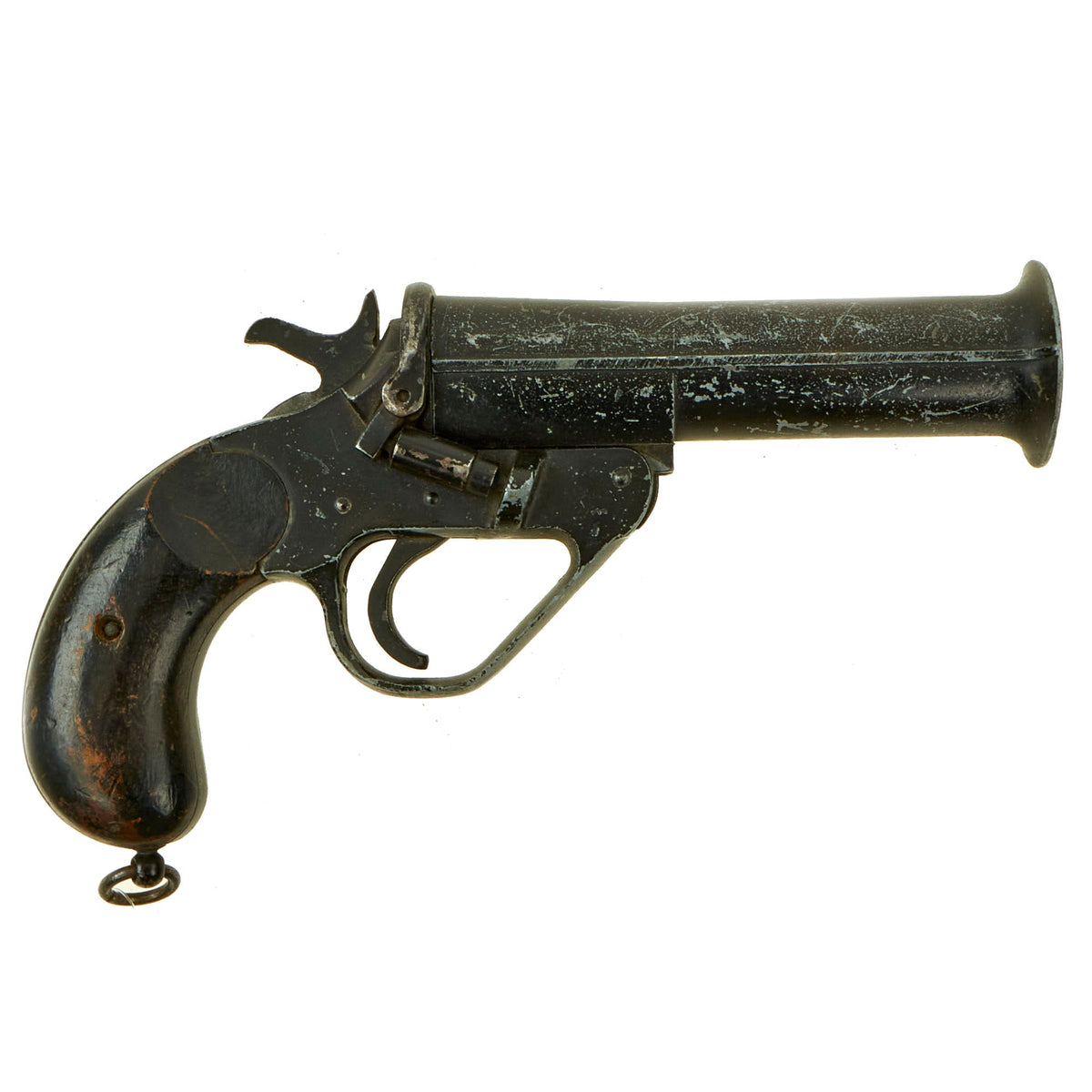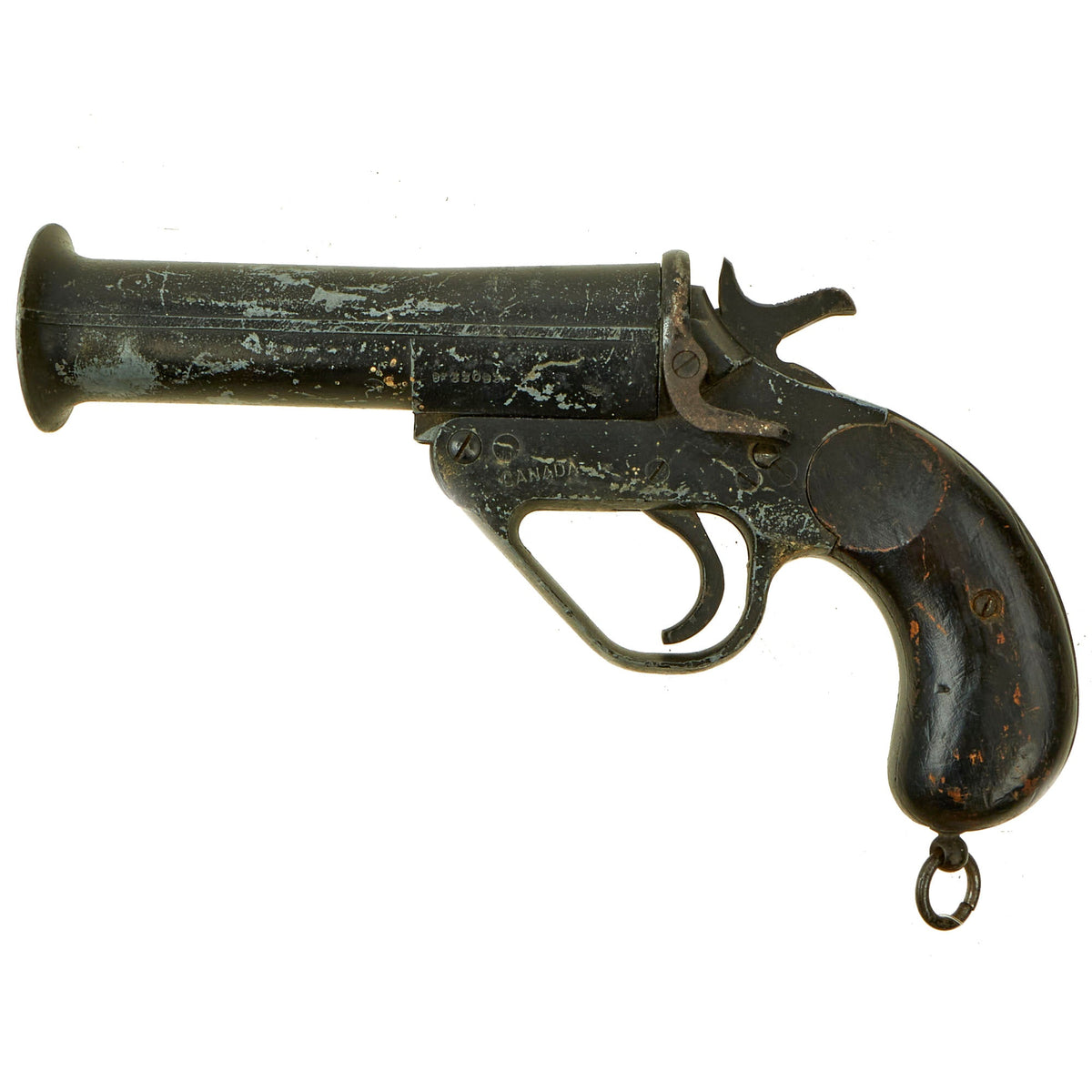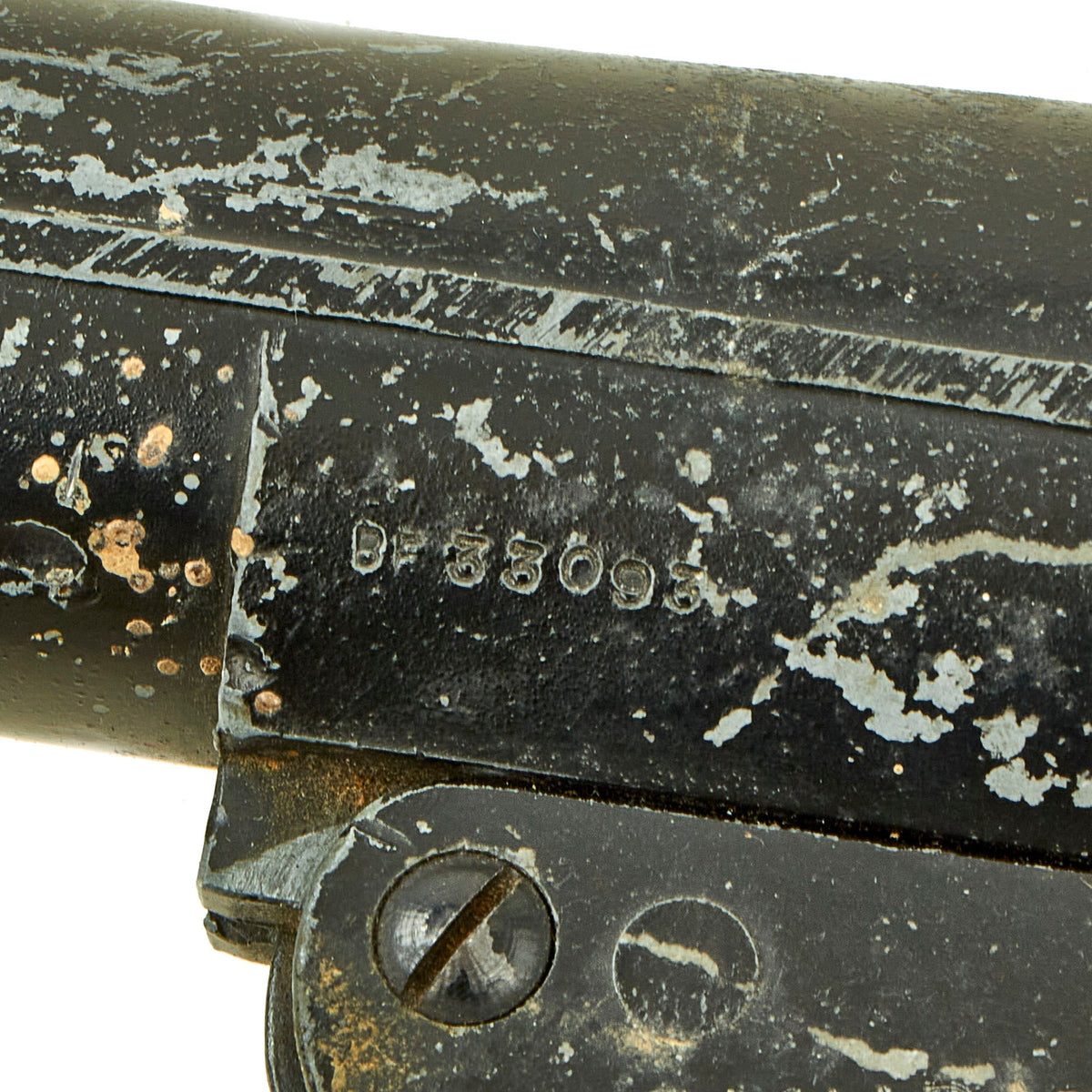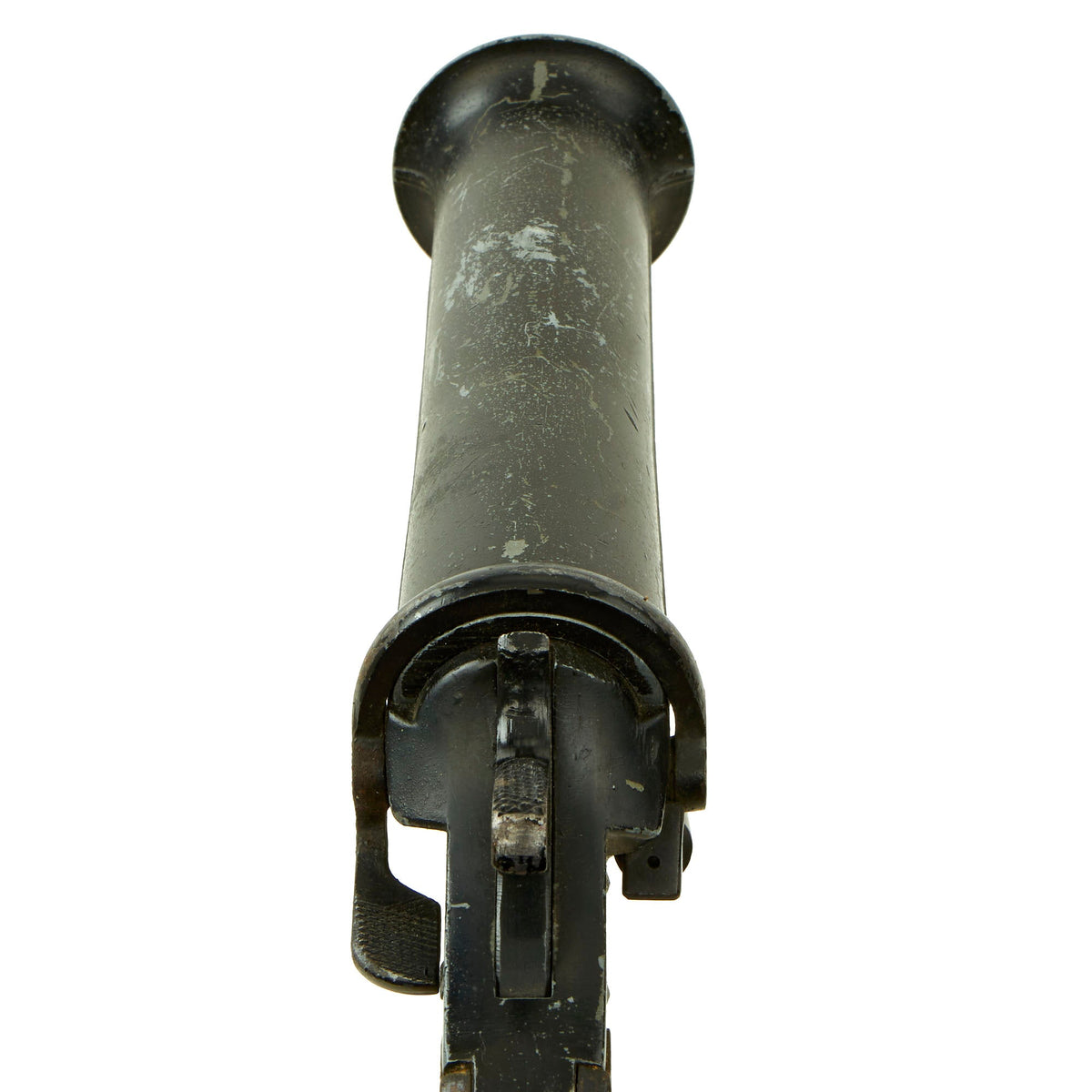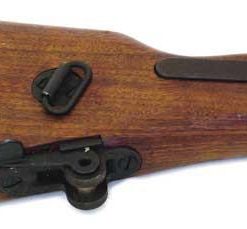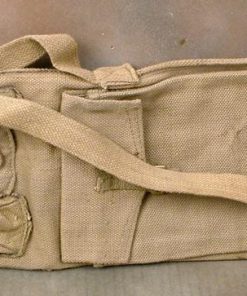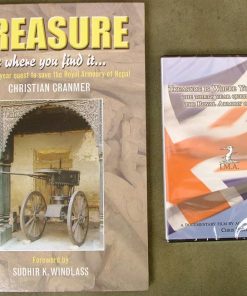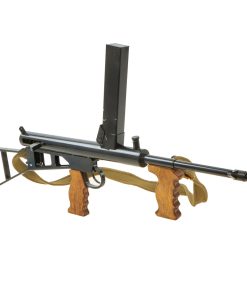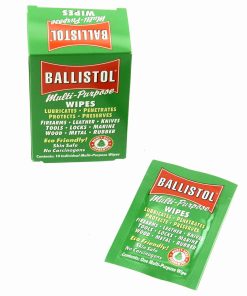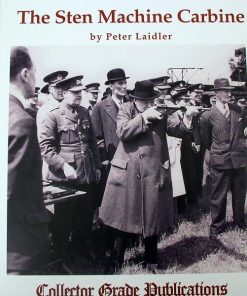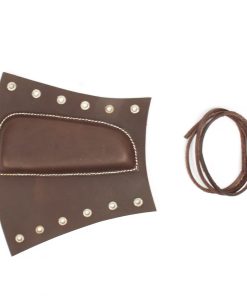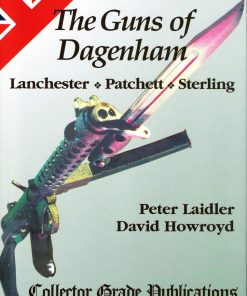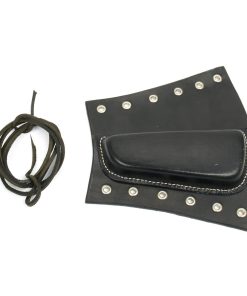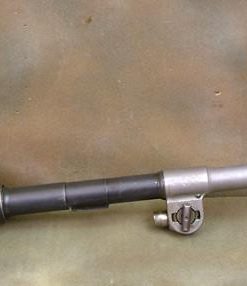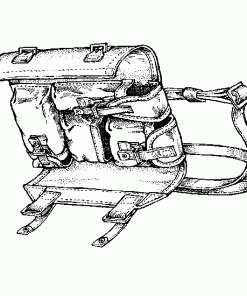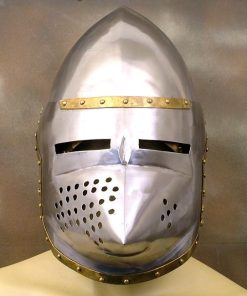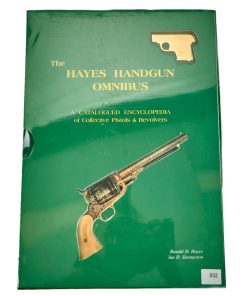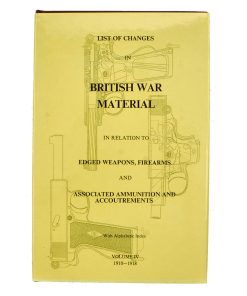Original Canadian WWII Zinc Webley No 1 Mk V Style Flare Signal Pistol – Serial 33093 Original Items
$ 295,00 $ 118,00
Original Items: Only one available. Zinc cast construction with smooth two piece walnut grips and lanyard ring on the butt. Serial number 33093 with proof BE stamped on barrel. Beneath the serial number, on the actual frame, CANADA is seen clearly stamped. Offered in excellent overall working condition with original blackened finish still present over a majority of the item and minor wear, use and storage marks.
This is truly a must have piece in your collection, especially when your significant other finds out you got something new, you’ll be able to signal for help!
A flare gun, also known as a Very pistol or signal pistol, is a large-bore handgun that discharges flares. The flare gun is typically used to produce a distress signal. A flare gun can be used as a deadly weapon, but that is not its intended function.
The most common type of flare gun is a Very (sometimes spelled Verey), which was named after Edward Wilson Very (1847–1910), an American naval officer who developed and popularized a single-shot breech-loading snub-nosed pistol that fired flares (Very lights). They have a single action trigger mechanism, hammer action, and a center fire pin. Modern varieties are frequently made out of durable plastic of a bright color that makes them more conspicuous and easier to retrieve in an emergency and assists in distinguishing them from conventional firearms.
The older type of Very pistol, typical of the type used in the Second World War, are of one inch bore (26.5mm), now known as “Caliber 4” for signal pistols. These are still available and more recent longer barrel models can also fire parachute flares. Many newer models fire smaller 12-gauge flares. In countries where possession of firearms is strictly controlled, such as the United Kingdom, the use of Very pistols as emergency equipment on boats is less common than, for example, the United States. In such locations, distress flares are more commonly fired from single-shot tube devices which are then disposed of after use. Flare guns may be used whenever someone needs to send a distress signal. The flares must be shot directly above, making the signal visible for a longer period of time and revealing the position of whoever is in need of assistance. There are four distinct flare calibers: 12-gauge (18.53mm), 25mm, 26.5mm, and 37mm – the first three being the most popular for boaters.
While not intended as a weapon, flare guns have been used as such in some situations. Towards the end of World War I during the Final Offensive of the Sinai and Palestine Campaign, on 19 October 1918 a German aircraft was destroyed on the ground by firing a Very light into the aircraft. The D.F.W. two-seater was first seen in the air; the first German aircraft since aerial fighting over Deraa on 16 and 17 September just prior to the beginning of the Battle of Sharon. The two-seater was forced to land and was destroyed after the German pilot and observer had moved to safety.
In 1942, a German pilot mistakenly landed at the Pembrey Airfield in Wales. The duty pilot, Sgt. Jeffreys did not have a conventional weapon, so he grabbed a Very pistol and used it to capture the German pilot, Oberleutnant Armin Faber.
In World War II, Germany manufactured grenades designed to be fired from adapted flare guns known as the Kampfpistole, or Sturmpistole in its final form. The weapon was designed to function as an anti-tank weapon but failed to perform to expectations due to the minuscule amount of TNT carried in the hollow charge projectiles.
In the latter stages of the Korean War, on November 2 of 1951, Lieutenant Edward Mastronardi and his 28-man platoon of the Royal Canadian Regiment were occupying a spur halfway between UN and Chinese lines known as the Song-gok. During the night, Chinese infantry launched several attacks against the spur. During the second attack, Mastronardi personally shot two Chinese soldiers with his Inglis Hi-Power pistol, and killed a third with his flare gun.
Fast Shipping with Professional Packaging
Thanks to our longstanding association with UPS FedEx DHL, and other major international carriers, we are able to provide a range of shipping options. Our warehouse staff is expertly trained and will wrap your products according to our exact and precise specifications. Prior to shipping, your goods will be thoroughly examined and securely secured. We ship to thousands clients each day across multiple countries. This shows how we're dedicated to be the largest retailer on the internet. Warehouses and distribution centres can be located throughout Europe as well as the USA.
Note: Orders with more than one item will be assigned a processing date depending on the item.
Before shipping before shipping, we'll conduct a thorough inspection of the items you have ordered. Today, the majority of orders will be delivered within 48 hours. The delivery time will be between 3-7 days.
Returns
The stock is dynamic and we cannot completely manage it because multiple stakeholders are involved, including our factory and warehouse. So the actual stock may alter at any time. It's possible that you may not receive your order once the order has been made.
Our policy is valid for a period of 30 days. If you don't receive the product within 30 days, we are not able to issue a refund or an exchange.
You can only return an item if it is unused and in the same state as the day you received it. You must have the item in its original packaging.
Related products
Uncategorized
Uncategorized
Uncategorized
Uncategorized
Book: Small Arms ID by Ian Skennerton: .303 Rifle, No. 1, S.M.L.E Marks II & III New Made Items
Uncategorized
Uncategorized
Uncategorized
Australian WWII Owen MK1 Machine Carbine SMG Custom Fabricated Replica with Sling Original Items
Uncategorized
Uncategorized
Uncategorized
Uncategorized
Uncategorized
Uncategorized
Australian WWII Owen MK1 Machine Carbine SMG Custom Fabricated Replica with Sling Original Items
Uncategorized
